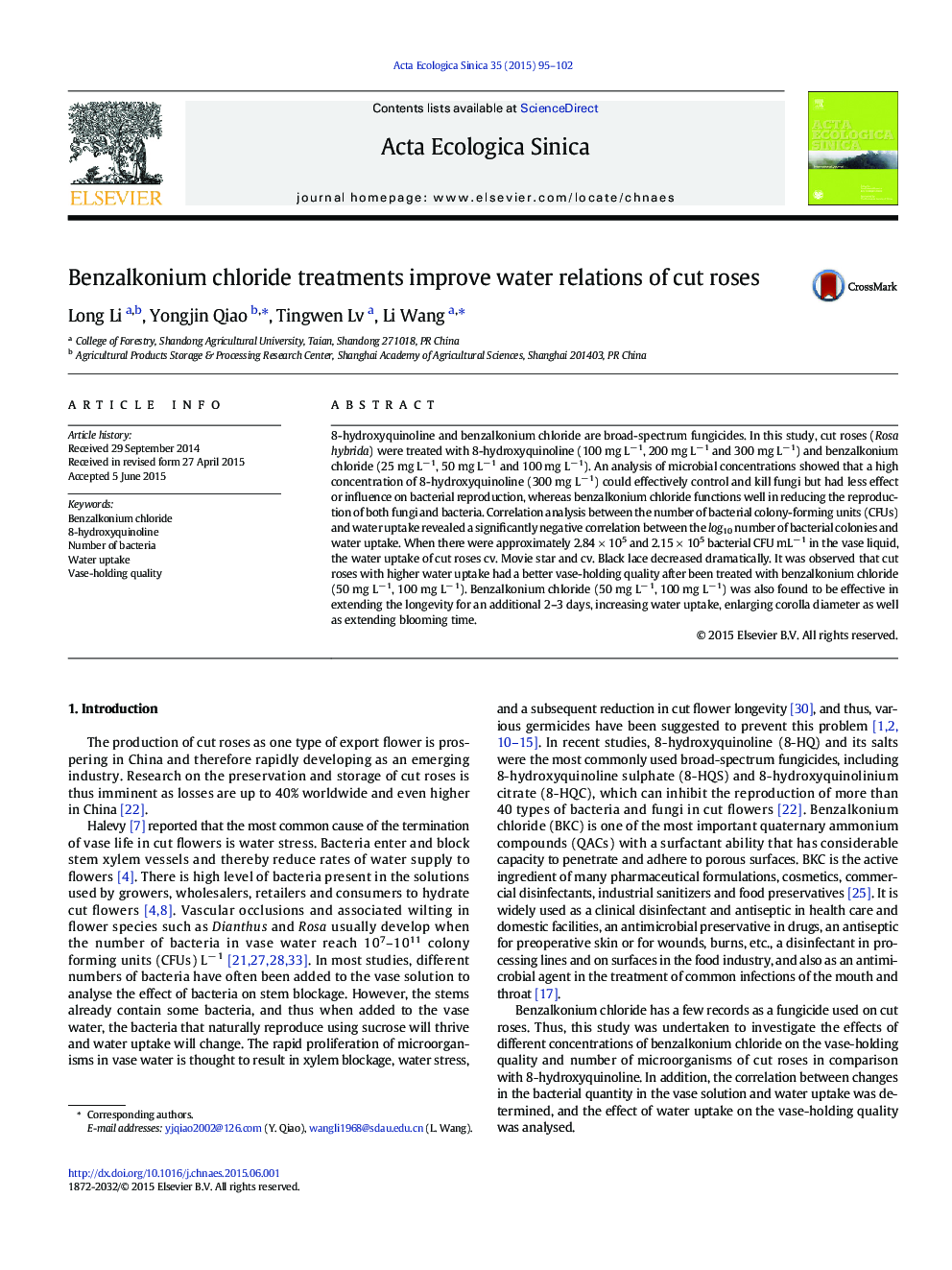| Article ID | Journal | Published Year | Pages | File Type |
|---|---|---|---|---|
| 4379884 | Acta Ecologica Sinica | 2015 | 8 Pages |
8-hydroxyquinoline and benzalkonium chloride are broad-spectrum fungicides. In this study, cut roses (Rosa hybrida) were treated with 8-hydroxyquinoline (100 mg L− 1, 200 mg L− 1 and 300 mg L− 1) and benzalkonium chloride (25 mg L− 1, 50 mg L− 1 and 100 mg L− 1). An analysis of microbial concentrations showed that a high concentration of 8-hydroxyquinoline (300 mg L− 1) could effectively control and kill fungi but had less effect or influence on bacterial reproduction, whereas benzalkonium chloride functions well in reducing the reproduction of both fungi and bacteria. Correlation analysis between the number of bacterial colony-forming units (CFUs) and water uptake revealed a significantly negative correlation between the log10 number of bacterial colonies and water uptake. When there were approximately 2.84 × 105 and 2.15 × 105 bacterial CFU mL− 1 in the vase liquid, the water uptake of cut roses cv. Movie star and cv. Black lace decreased dramatically. It was observed that cut roses with higher water uptake had a better vase-holding quality after been treated with benzalkonium chloride (50 mg L− 1, 100 mg L− 1). Benzalkonium chloride (50 mg L− 1, 100 mg L− 1) was also found to be effective in extending the longevity for an additional 2–3 days, increasing water uptake, enlarging corolla diameter as well as extending blooming time.
